Cryptocurrency Boom: The Birth of Meme Wealth
Author: Armonio, AC capital
Humans chase trends, and trends create value. This is a history that humanity continuously repeats.
Tulip bubble = trend + limited supply.
This is humanity's most famous and also the earliest super meme. Entering the 21st century, the information age has moved from the infinitely replicable web 2.0 to the limited information of Web 3.0.
Information spreads at the speed of light on the internet, while the entities carrying the value of trends have leaped from offline items like bags, luxury watches, and sports cars to online strings of non-replicable data. Payment scenarios have spread to every corner of the world with mobile terminals. Bong! The meme explosion has given rise to a bizarre meme world.
In the world of Meme coins, whoever creates a trend, especially an internet trend, can directly monetize that trend through tokens.
So, how do you create a trend? This article first proposes a theory of meme popularity and then uses that theory to deconstruct the rise of BTC and Bome.
01
The Secret of Crypto Trends
The essence of information trends is no different from the spread of diseases. In communication studies, the models for information dissemination and virus transmission both use the SIR model. Interested readers can check it out; we won't go into details here:
https://en.wikipedia.org/wiki/Compartmentalmodelsin_epidemiology.
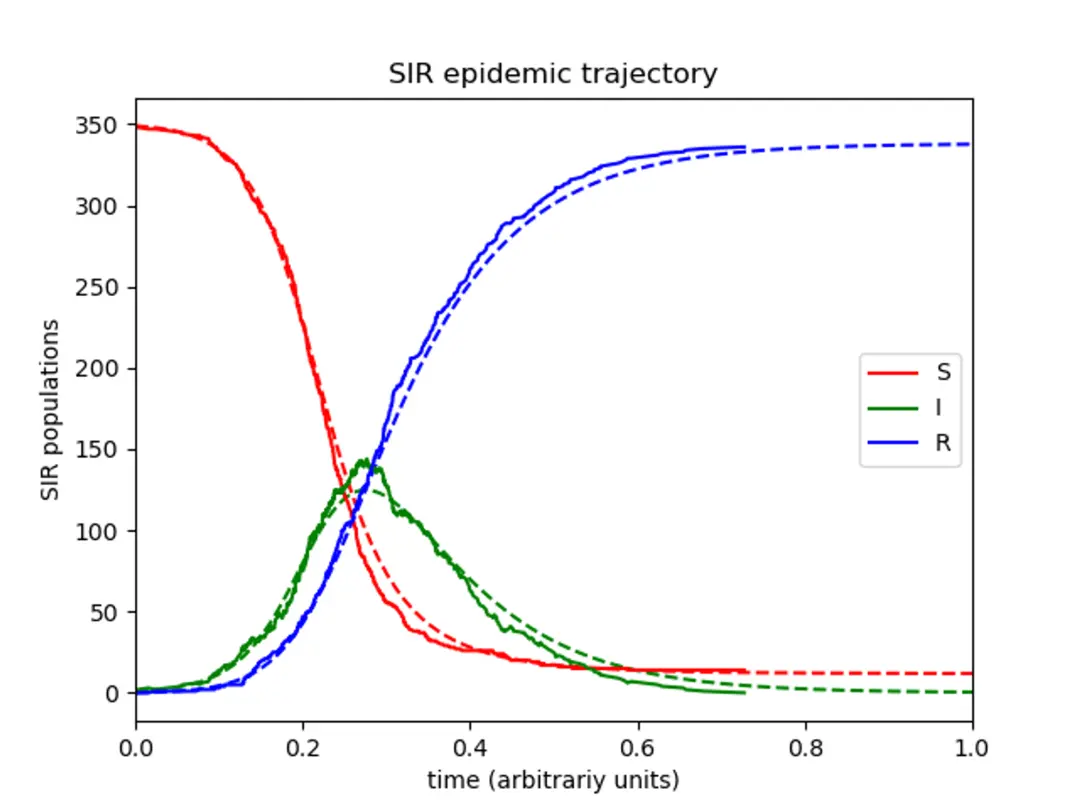
The process of information dissemination is divided into two parts: information infection and information immunity.
Information infection: We convert ordinary people into followers of trending information.
Information immunity: Followers of trending information break free from its influence and become outsiders.
The core of making information trendy is: ensuring that the rate of infection exceeds the rate of immunity. As long as the number of infected individuals in a unit of time exceeds the number of immune individuals, the number of followers of the trending information will increase, and the information will continue to spread. Conversely, if the infection rate decreases, the trend will decline. So how do we increase the infection rate and decrease the immunity rate?
Undoubtedly, if information can reach more newcomers (those who have not been exposed to the information), the infection rate will increase. The higher the quality of the information, the greater its stickiness, making it easier to spread and harder to escape. Here, I summarize four important external factors for meme success, combining communication studies and social psychology:
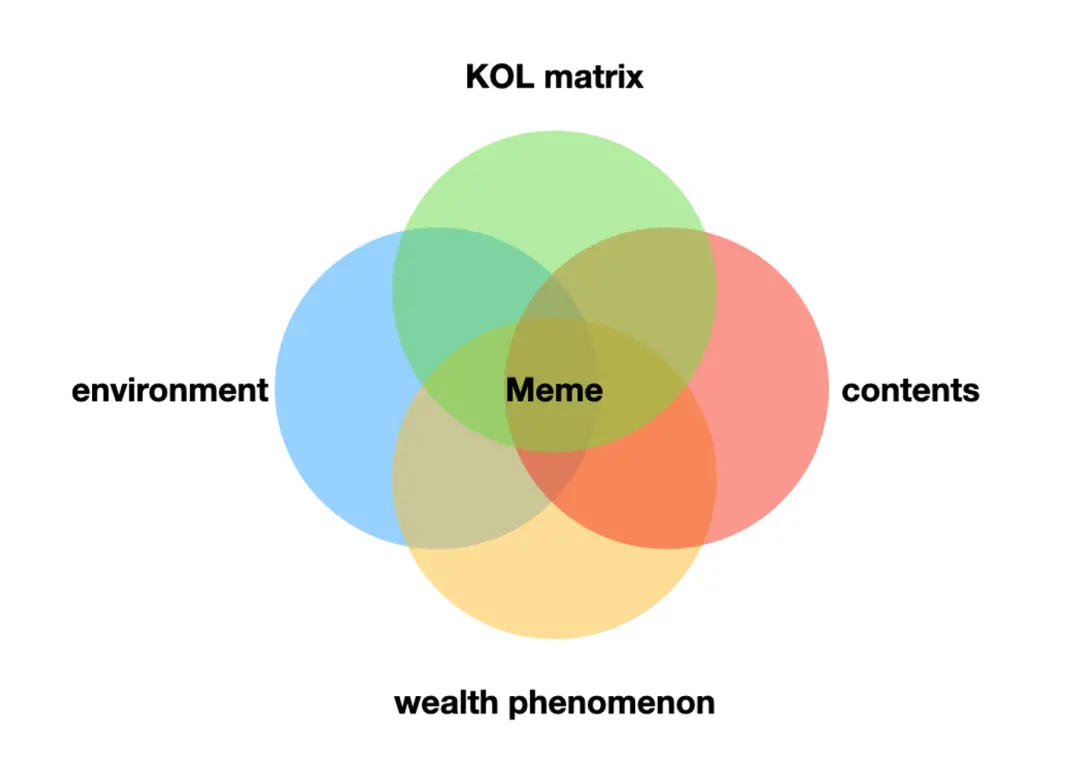
Four Key Elements
Content:
Content is information. It is the main body of dissemination and determines the attributes of the spread. The target audience for dissemination and the priority nodes for dissemination are all determined by the information itself. For example, $People naturally has a leftist color, and leftists will have an inherent emotional connection to it. Using such concepts to resonate with leftist groups has a natural advantage. Similarly, $Doge has an affinity for dog lovers. Moreover, this affinity exists over a long period.
The stickiness of content. Some concepts are time-sensitive, such as memes related to recently emerged political figures or sports events. Once a political election or event is over, the trend in the real world ends, and the on-chain information driven by real-world trends loses its fuel, potentially shifting from an infection > immunity state to an infection < immunity state.
The affinity of content also includes the ability for secondary dissemination. A good dissemination event must lower the barriers to dissemination; the simpler and more direct it is, the more ordinary people can spread it, leading to wider dissemination.
Environment:
The environment consists of two parts: time and space.
1) Time: Crypto Cycle
Time refers to the unique economic cycle of the crypto space. The outbreak of memes must occur when the industry has attention and users are willing to participate in speculation. Previously, this happened in the later stages of a bull market, when all project stories became dull, and pure cultural dissemination of memes shone through. The current meme craze sparked by inscriptions marks an important shift. Industry attention is drawn by the meme itself, and cultural dissemination is no longer an alternative when project content cannot be sustained but has become a way to attract traffic. Of course, the broader context for BTC's inscription meme is: 1. The BTC ETF is about to be approved, making BTC a mainstream asset and gaining mainstream world attention. 2. The BTC halving is imminent, with expectations of a bull market following the halving, attracting attention.
2) Space: Community
Space refers to the community. The definition of a community is a group of people with a common purpose. Having a common purpose means that this group of people shares common attributes. If the content being disseminated aligns with these attributes, it can achieve faster dissemination efficiency. Just as different diseases spread at different rates among different populations, malaria spreads more easily in areas with poor sanitation, such as Africa. The emphasis on community attributes in memes is because trends are very weak at the beginning and can easily be stifled in their infancy. Therefore, initial dissemination particularly needs a suitable small environment, similar to a petri dish.
KOL Matrix
Scientific evidence shows that different individuals have varying abilities to spread trends. Some people are particularly adept at conveying their viewpoints to others and easily gain the trust of those around them. These individuals are super individuals, KOLs. The more KOLs we have, the more we can form a KOL matrix to influence larger groups. KOLs are closely connected to communities, and KOCs who have influence within the community are truly valuable nodes. If they cannot reach the target audience, the value of KOLs significantly decreases.
Wealth Effect
The crypto space is characterized by a wealth effect that leads attention. The so-called "using price increases to attract people" means using financial facts to assist in the dissemination of information. Thus, memes exhibit a self-reinforcing relationship between coin price and cultural dissemination. The higher the price of meme coins, the broader the cultural dissemination, and the more steadfast the believers become. Conversely, the lower the price of meme coins, the less favorable the cultural dissemination, and the more detached the believers become. Therefore, meme coins often exhibit properties of extreme price volatility.
02
Analysis of Meme Operations
In this section, we will analyze two cases to review the projects and explain the above theories.
BTC
Many people do not acknowledge BTC as a meme coin. But that is not important. The definition of a meme originates from Darwin's theory of evolution, referring to the idea that, like biological entities, the spread of information also involves replication, mutation, and selection. From a macro perspective, the diffusion of BTC's consensus is no different from that of other meme coins. The only difference lies in the content being disseminated.
The content of BTC is the fear of the collapse of centralized finance. In its genesis block, a news summary was added stating, "The British Chancellor is bailing out the financial system again." This news serves as an anchor point, becoming an anecdote. Each time it spreads, this anecdote reinforces the fear of centralized collapse. Each financial storm strengthens BTC's consensus. The stickiness of BTC's consensus is very strong. Believers in BTC often find it hard to abandon their faith in BTC. This stickiness of belief is well recognized within the industry.
Using fair mining in the consensus is a reciprocal design. In the early stages of the project, as long as one invests computing power, they can obtain BTC. Satoshi Nakamoto himself also airdropped some BTC to certain users, which can also be seen as reciprocal. The act of investing computing power can be viewed as a form of recognition for the BTC project. Through this behavior, those who obtain BTC psychologically acknowledge it. In terms of supply, BTC has implemented a limit of 21 million coins through its protocol, making scarcity evident. Satoshi's documentation also depicted BTC being accepted worldwide, with BTC reaching $1,000. Although this seems overly conservative today, it was an enticing promise in an era when BTC had no price.
The early stages of a meme are like the initial spread of a new virus, very fragile. In the early stages of meme dissemination, because the nodes available for spreading are very limited, it is essential to increase the likelihood of successful dissemination. The publication date of the BTC white paper was in 2008. Although it was not a bull market, it was a time when centralized finance was in turmoil. Everyone was questioning the sustainability of centralized finance. The timing and narrative of the content were highly aligned. This was crucial in the early stages of meme popularity.
The community BTC initially chose was also carefully selected. Satoshi first targeted the crypto community. The ideals of the crypto community were highly aligned with BTC's design philosophy, with a sense of urgency and mission regarding decentralization. Developing them as seed users faced minimal resistance.
Satoshi's initial KOL matrix for dissemination included big names in the crypto community: Dai Wei, Hal Finney, Jon Matonis, Laszlo Hanyecz, and others. For example, in an email Satoshi sent to Dai Wei, he indicated that the concept and design of BTC not only realized Dai Wei's ideas in his paper but that Hal Finney had already recognized such a product. This provided credit endorsement for the product. These individuals may not be well-known outside the crypto community, but they hold significant influence within it. Their involvement helped BTC quickly establish roots in the crypto community.
Bome
Before its launch, whether intentionally or unintentionally, artist Dark Farm was well-prepared for the popularity of a meme. In terms of content, Bome is creating a book of memes that records the history of memes. In the current environment, this has historical value. As I mentioned earlier, through cultural issuance, it has become a backup role this year after escaping the lack of projects to launch. Instead, it leads the forefront of the entire industry. Whether it's Solana, Avalanche, or Ethereum, all regard memes as an important means of attracting new users. Investors are also gradually recognizing meme tokens as an asset. The book of memes serves as a comprehensive collection of meme culture, naturally attracting attention. This concept has an inherent affinity for those pursuing memes.
In terms of timing, the launch occurred during a bull market with abundant funds. Regarding the community, Dark Farm had previously delved into meme culture within the ETH ecosystem, and creating the Book of Meme project was not a spur-of-the-moment idea; he has a certain influence within the meme community in the crypto space. His previous representative work maintained a floor price higher than the issuance price even before the Book of Meme became popular, indicating that his contributions were recognized by the community and he had a certain level of notoriety. This community overlaps significantly with the community pursuing meme coins.
Next, we observe the reposting and dissemination behavior of Bome's launch posts, many of which were supported by KOLs who are also artists. Although these artists may not be very prominent, they have genuine user engagement and cohesion. Once a meme reaches a certain stage of development, it can gain interaction from other traffic sources, such as promotions from Beeple. As a meme artist on Twitter, Dark Farm also has a strong sense of traffic and is adept at leveraging super nodes to enhance the influence of his project.
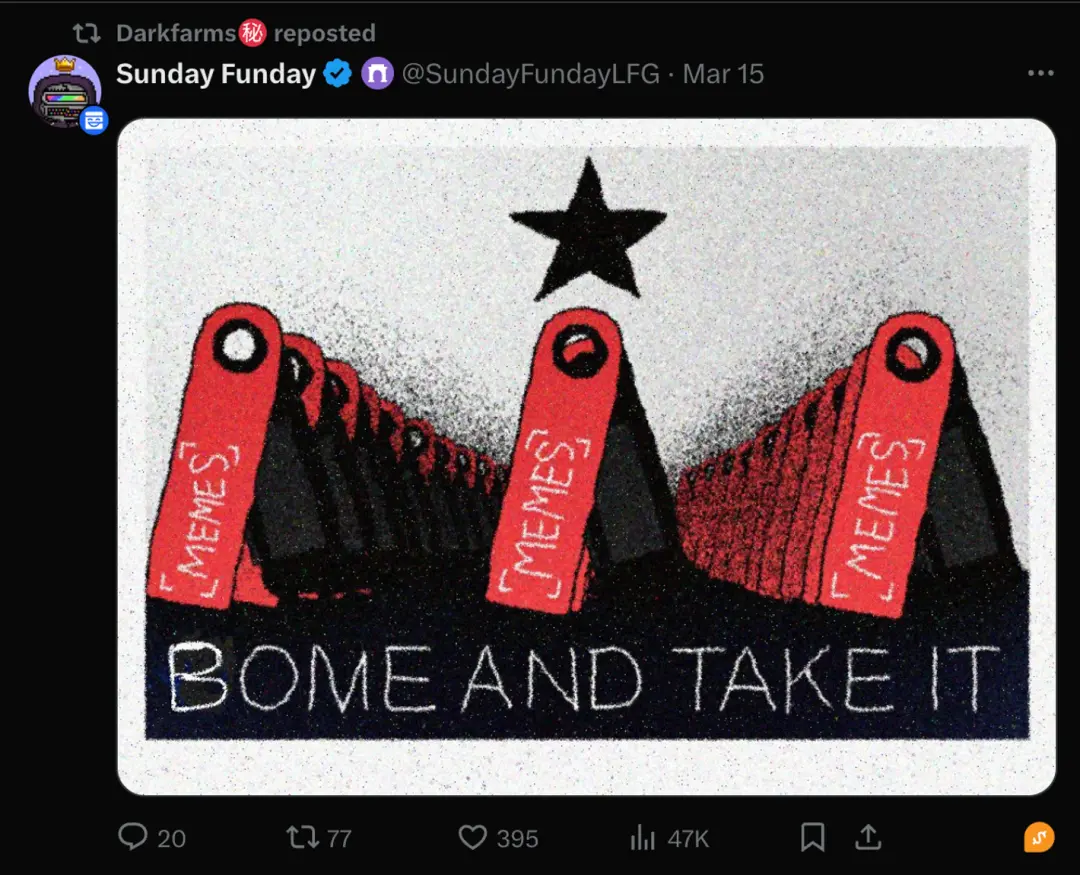
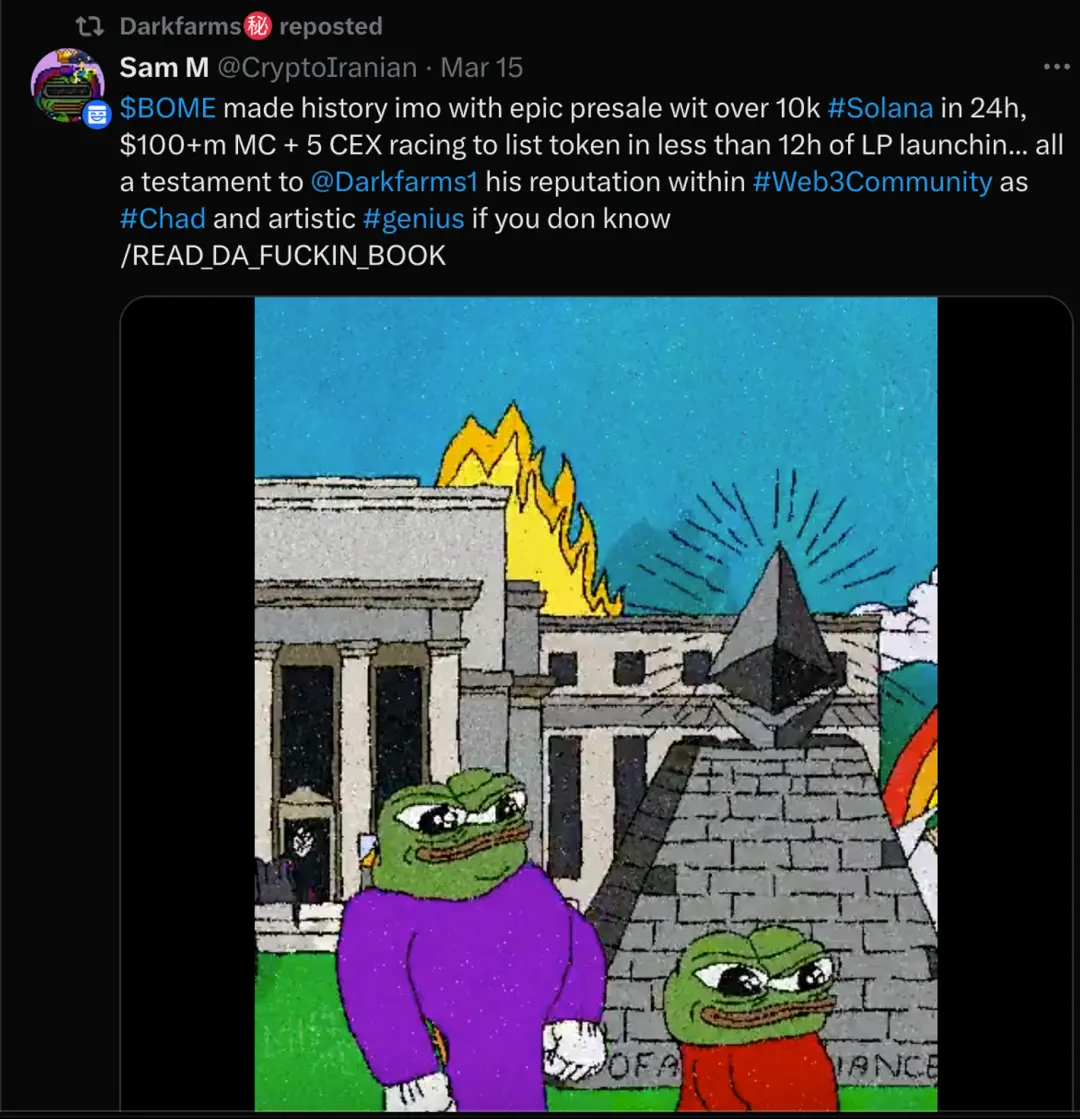
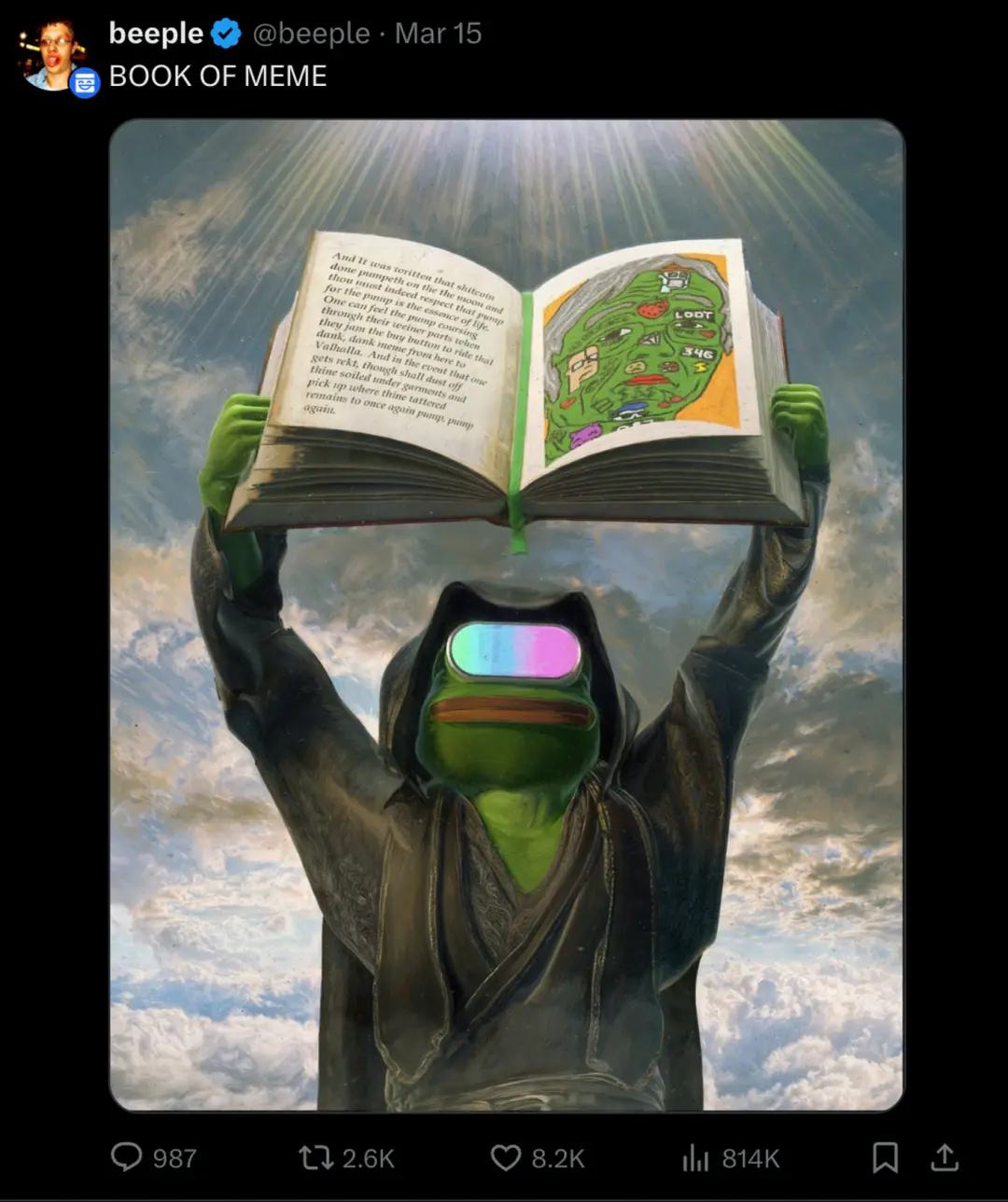
The avatars of early disseminators show that the initial promoters came from the SMOWL community. Having a community allowed Bome's meme to directly bypass the most fragile stage. This was also part of Dark Farm's plan; in his Bome manifesto image, SMOWL and these initial KOLs mutually corroborated each other. After Bome's success, the NFT price of SMOWL also surged to a floor price of 0.7, providing substantial returns for these community members. The entire operation formed a perfect closed loop.
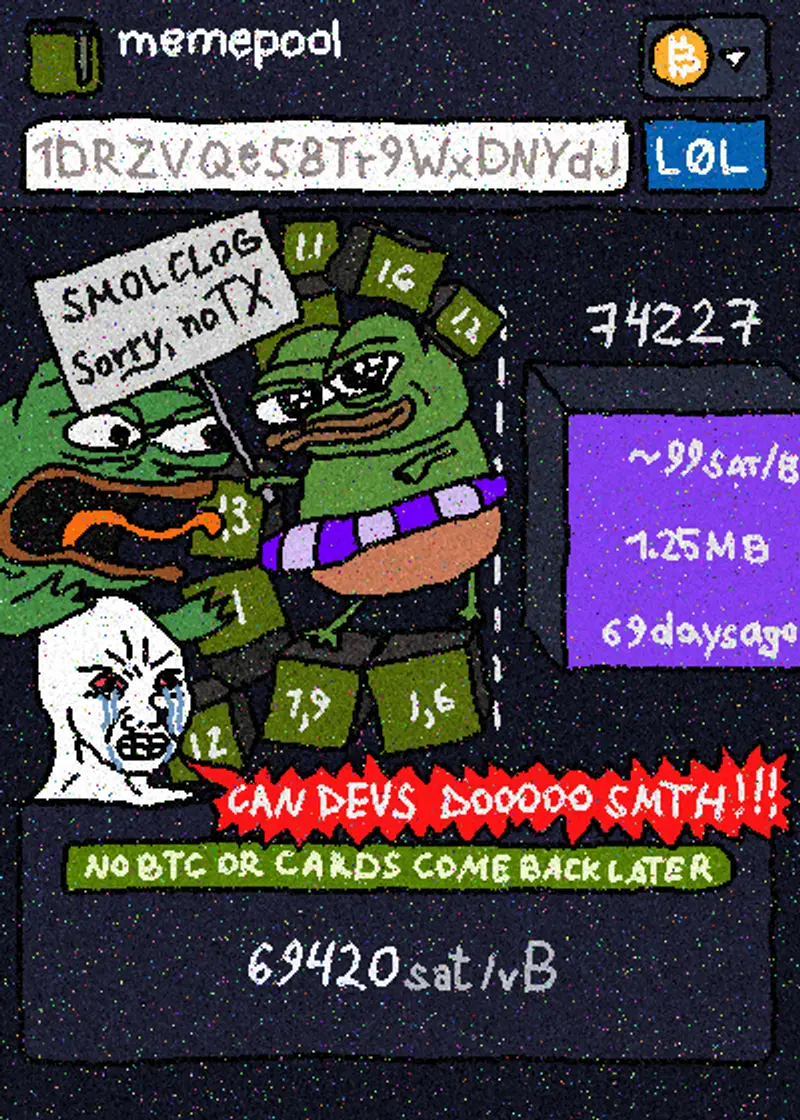
I once said that the three pillars of projects in the internet era are traffic, technology, and capital. In the world of memes, technology and products do not exist. The success of a meme project is the mutual matching of traffic and capital. Capital can drive up coin prices, but simply relying on price increases cannot effectively attract retail investors.
This also indicates that for memes, there can only be one Bome of its era. From the perspective of traffic economics, all other memes are competitors to Bome. If Bome is diluted, it will collapse, and other second-tier and third-tier projects will find it even harder to make progress. If Bome is not diluted, the second-tier and third-tier projects are merely small-scale activities.
03
Conclusion
Meme tokens are the most distinctive phenomenon of the attention economy in the Web 3.0 era. Attention is directly endowed with financial value. The matching of capital and attention creates meme tokens.
Creating attention involves dealing with people. Besides the unique wealth effect, it emphasizes the KOL matrix, the dissemination environment, and the alignment of information content. The convergence of various factors is not a simple matter. Therefore, creating a meme that breaks out of the circle is not an easy task. When examining the birth and breakout of a meme, in addition to looking at trading volume, liquidity, and the background of the founders, one can also consider these four factors.
In the world of memes, when investing, one can consider the phenomenon of attention feedback. For example, the Bome community has boosted the value of the SMOWL community.
References:
The Tipping Point: How to Create Trends
Attention Economy: How to Turn Public Attention into Business
Communication Theory: Origins, Methods, and Applications
Influence
Satoshi Nakamoto's Documents:
https://www.bitcoin.com/satoshi-archive/
Revealing Satoshi's Early Emails: Where Did Bitcoin Come From and What Was He Worried About:
https://finance.sina.cn/blockchain/2024-02-29/detail-inaksefw9773885.d.html
Reviewing BOME: The Art of a Divine Project
https://www.theblockbeats.info/news/51939
Soaring 20 times in 3 hours, why did Pepe Meme artist BOME suddenly explode in popularity?
https://panewslab.com/zh/articledetails/9m6d8kl5.html
Why is BTC the biggest Alpha in this round?
https://www.techflowpost.com/article/detail_16623.html
DarkFarm's Twitter thread
https://twitter.com/Darkfarms1









